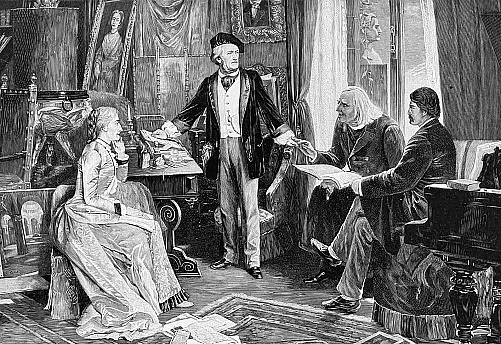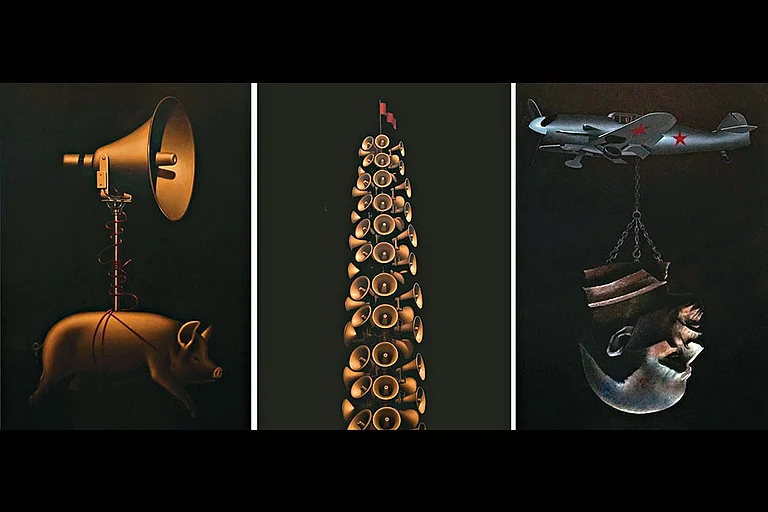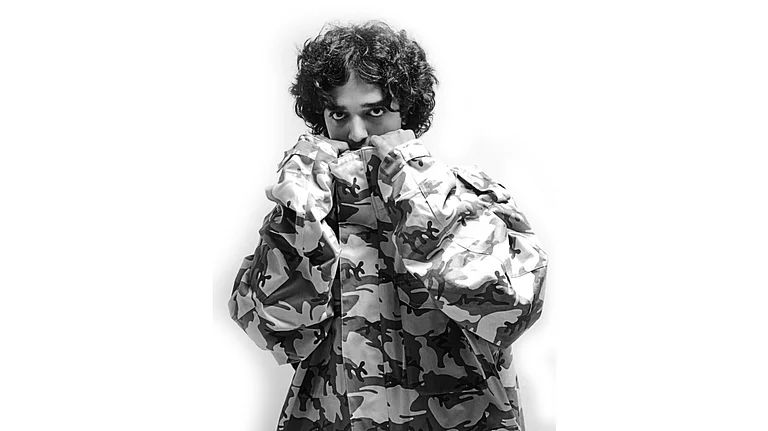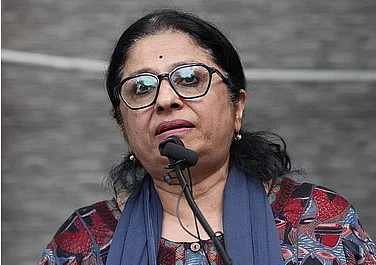"At lunch, while waiting for dessert to be served, Cosima Wagner said to one of her servants, “We must wait, the master is at the piano.” They heard him playing upstairs on the second floor. He was studying, preparing the Easter music for Parsifal. He came downstairs. And at the lunch table… when he was talking about the Jewish question, he said, “Jews should be burned alive!” The same day he composed the Easter music for Parsifal." - A long Saturday: conversations, George Steiner with Laure Adler
The above account gives a glimpse into a long debate around the German composer, Richard Wagner. On one hand, there is Wagner’s monumental music that is seen as the highest and final enunciation of not only German Romanticism but also the essence of modern Western music. And on the other hand, are his personal views on Jews, the fanatic devotion of Hitler to Wagner’s music, and the use of Wagnerian pieces at Nazi state occasions, on Nazi newsreels and even in concentration camps. The question is: Was anti-Semitism simply a personal idiosyncrasy of the ‘artist’ Wagner, like a private defect while he wrote music of incomparable beauty? Is his anti-Semitism external to his art or does it form the very core of his art? Should we listen to Wagner after the experience of the Holocaust? And if we enjoy Wagner’s music, does that mean we are complicit in the atrocities against Jews? Must we feel guilty if we experience pleasure in his music?
The relationship between the artist and the artwork is a complicated one, and this question glares at us every time we come across the dark and cruel side of an artist’s personality. I struggle with this question myself and I must state that I do not have a ready answer to this debate. However, I will try to investigate this problem in the course of this article through three modes – the place of the artwork, the figure of the artist, and finally the question of cancel culture in the specific context of Indian classical music.
Cancel culture or a critical resistance?
We commonly believe that the artist and the artwork are deeply connected in a causal relationship where the artist is the source, the creator of the artwork, and the artwork is the consequence, a subjective expression of the artist’s ideas, personality and circumstances. We consume various kinds of biographical material and trivia on the lives of artists in order to search for that secret essence that informs the intensity that they bring to their work. However, this causal equation is challenged when we view the artist and the artwork in a reciprocal relation. In his seminal essay, The Origin of the Work of Art, the philosopher Martin Heidegger says, “The artist is the origin of the work. The work is the origin of the artist.” (Of course, my recourse to Heidegger can be questioned considering he was an anti-Semite. The question to-read-or-not-to-read Heidegger is still debated in academic spaces, but that is for another piece. For now, we shall go with what his student, Hans Georg Gadamer, said about him, ‘Martin was the greatest of thinkers and the basest of men.’) The reciprocal relation suggests that inasmuch as the artwork arises out of the activity of the artist, the artist emerges as a master of art through the artwork. And both the artwork and the artist originate on account of a third thing that existed prior to them, which is art. It is art that speaks through the artist and appears in the artwork in a unique way. The artist is a medium or a passage for the creative and impersonal force of art to pass through, a force that actualizes in the artwork.
There are two inferences that we can draw from this. The first concerns the place of the artwork – that in spite of being created by an artist, the artwork has its own reality. While there is an artistic and creative process through which an artist fashions the work, the artist is not the source of the essence of the artwork. Beyond the creativity of the artist, beyond the artistic process, the artwork creates a world of its own where it appears in a unique and compelling way. It is in this respect that the artwork is absolutely singular and autonomous. We often encounter artworks and are deeply impacted by them without the knowledge of the artist or her context. They say something to us, and they hold the possibility of saying something completely different to another person. This is the transformative quality of the artwork where the encounter of the viewer with the work creates the possibility for art to emerge. And this cannot be reduced to either the artist or the artwork. It is this complexity of the artwork that captivates us in its encounter, however flawed the artist might be.
Let us consider a second inference that concerns the figure of the artist, which makes the discourse of the artist and her artwork even more complicated. In saying that the artwork is held in a relation of reciprocity with the artist, Heidegger seems to disturb the privileged position that we usually ascribe to the artist as the creator of the work. Instead, it is the artwork that endows the artist with a certain identity, status and legitimacy as an artist. The artwork creates an aura around the artist owing to which she exercises an amount of social and cultural power in the domain of art, politics and society. This aura, which can be seen as the creation of value and power around the figure of the artist, also supplements her with a sense of infallibility. This is why allegations against artists are always met with shock and disbelief. In many cases, they are also violently rejected and silenced for it is believed that artists are not capable of terrible and base acts. This is also the barbarism of the power of the artist. It is this privilege and sense of entitlement which the artist enjoys, that must be questioned and resisted.
This complexity between the artist and the artwork therefore calls for the redefinition of what we mean by ‘cancelling’ and what it is that we must cancel. It is my contention that the sheer force of the artwork is an experience that cannot be undermined and should not be cancelled. But instead, what we must resist is the privilege and unquestioned power that an artist exercises. And along with that, we must dismantle every structure and hierarchy that sustains this power. Let me illustrate this point through the specific context of Indian classical music.
The deceitful case of guru and shishya
In the past few years, several allegations of sexual harassment have surfaced against classical musicians and dancers, however, barring a few, rarely have they resulted in thorough institutional investigations. One of the crucial reasons for this impunity is the privilege that musicians enjoy under the guru-shishya parampara. It is a hierarchical system of pedagogy that makes the teacher into an infallible demi-god on whose feet, the student surrenders not only her pride, but also her rationality and self-respect. Under the garb of tradition, knowledge and mysticism, it is a feudal system based on Brahmanical and patriarchal values that enables all kinds of discrimination and injustice, while creating a protective halo around the teacher. All musicians of the ‘classical fraternity’ are aware of the injustices of this system and derive power from it. The history and the present practice of Indian classical music stands witness to this fact.
I will take the example of allegations of sexual harassment that came out against the three dhrupad musicians, Gundecha brothers, in 2020. The musicians and their supporters went from pillar to post to suppress the testimonies, they threatened witnesses and survivors, used political clout, but they were not able to stop the surge of voices that were sprouting from different corners of the world. The international pressure forced them to constitute an Internal Complaints Committee (ICC) to look into these allegations. A year later, the ICC submitted its findings holding them accountable for sexual harassment at the institute, giving a list of recommendations and advising that the institute be shut temporarily. The Gundecha brothers then filed a case against the ICC in the High Court. Many survivors filed intervening petitions, but the case has been languishing in court till date.
In lieu of the matter being sub judice, the way the briefly tarnished power of the Gundecha Brothers has been reinstated in the past few years in Bhopal, it feels as if these allegations never came up. Various pegs of the cultural scene – from senior and established artists, cultural, religious and educational organizations, supporters and students, to state bodies and politicians – have been working to restore a sense of normalcy around these musicians. The institute continues unhindered with no check on legal violations. The Gundecha Brothers are regularly conferred with awards and felicitated by the government. The impunity and clout that they enjoy comes also through the various invitations they receive to important government functions, or to preside over conferences at universities, invitations to perform at functions of religious-spiritual organizations, centenary celebrations and prestigious music festivals across the country. And all this continues while maintaining absolute silence on the allegations or the court case.
We must be clear that these are not innocent instances of giving space to great artists. They are in fact opportunities for them to exercise social and cultural power and efforts to give them legitimation despite the allegations. While hiding their offences under big talk about tradition, music, education and ancient culture, this legitimation is also intended to propagate the narrative that classical artists, with all their wisdom, spirituality, mysticism and knowledge, cannot be offenders. It is this barbaric nexus of parampara, purity, and politics that must be cancelled, and in fact abolished, at all costs. So if all the musicians of Indian classical music who share the stage with Gundecha brothers, senior musicians who bless and encourage them, devoted students who fall at their feet and garland them, state authorities that shower accolades on them – if they are in fact sincere lovers of their music, then they should have the courage to take a critical stand and say that ‘the music of the Gundecha brothers might be great but that does not exempt them from undergoing trial for the allegations.’ That would be a step towards justice in the world of music that does not fail students and allows them to think critically and creatively in the pursuit of art.





















